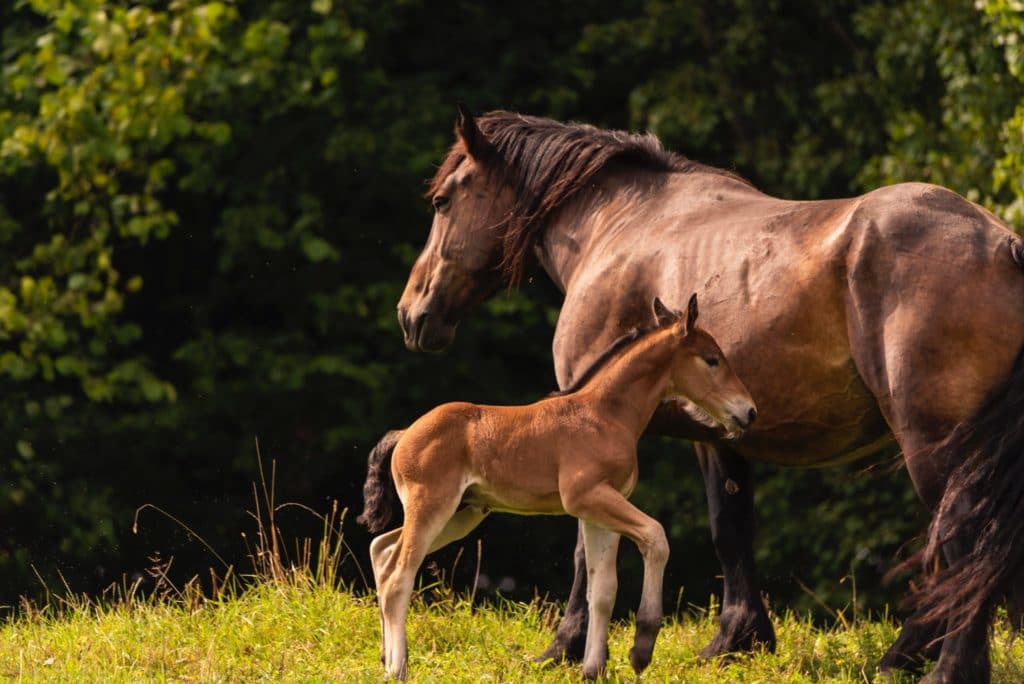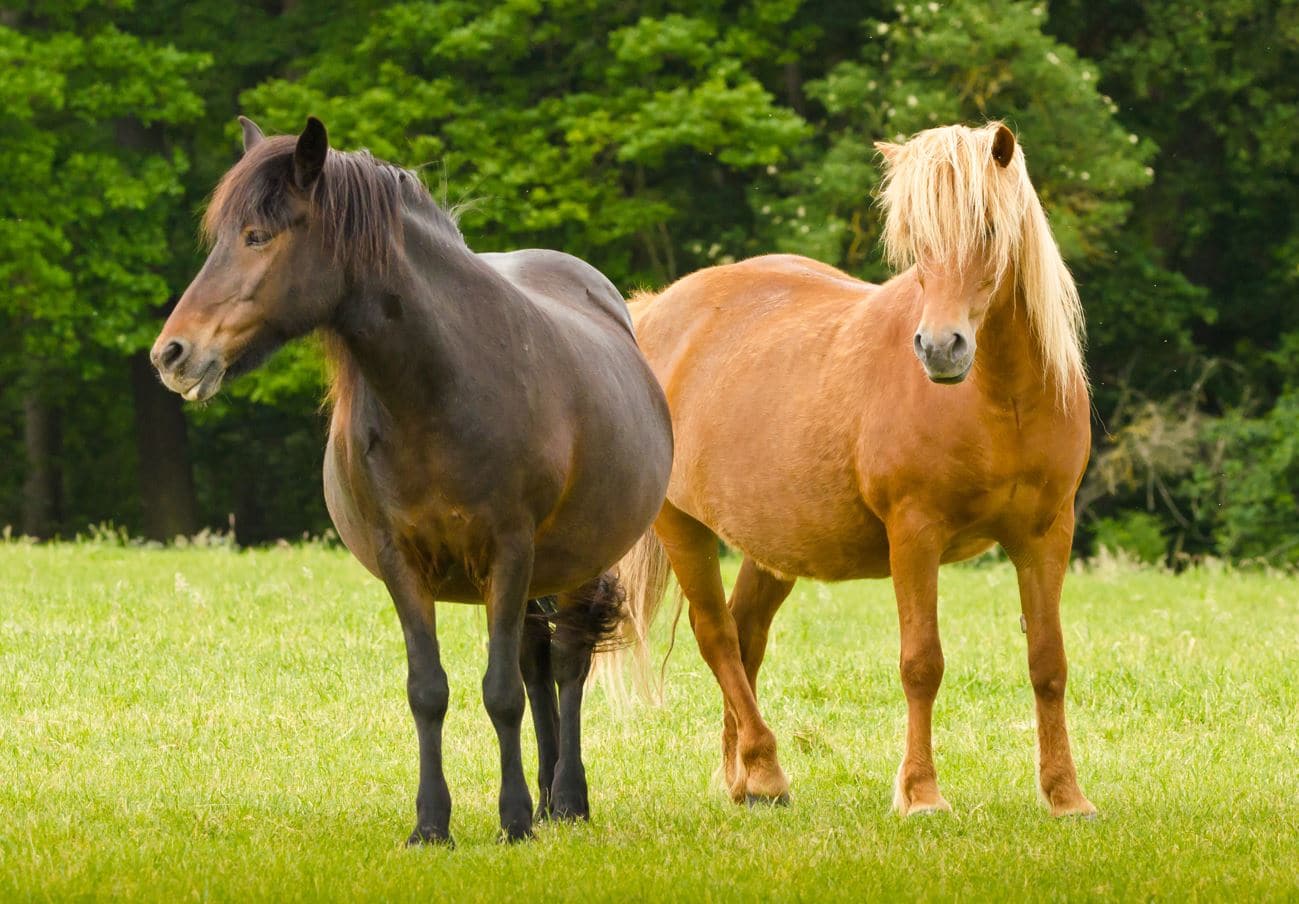Proper management of breeding mares and their nutrition is an important factor in producing healthy foals. Horse owners invest a lot of time, money and effort in deciding which stallions will breed with their mares. However, some breeders underestimate the nutritional needs of mares during the last three months of pregnancy and the first three months of lactation. The management of the breeding mare and her diet must be planned to give the foals the opportunity to express their full genetic potential.
At any time after January 1 in the northern hemisphere, and from July 1 in the southern hemisphere, mares give birth on many farms. Feeding breeding mares should be divided into 3 stages:
- The first 2/3 of gestation
- The last third of gestation (110-115 days)
- Lactation
THE FIRST 2/3 OF THE GESTATION PERIOD
The first 2/3 of gestation is the least demanding. Mares can be maintained at a body condition of 5 or slightly above. Early in gestation, the fetal weight is low relative to the mare’s weight. Mares should be fed according to their maintenance needs and activity level.
They will need 1 or 1.5% of their body weight in forage or its equivalent as a source of fiber, plus enough feed to maintain their weight.
If you are using alfalfa hay, you will need a suitable feed with a reasoned protein intake, Royal Horse S-200 and S-250 feeds are suitable with guaranteed levels of lysine, methionine, calcium, phosphorus, copper, zinc and vitamins.
If you are using prairie hay, it is advisable to use a feed formulated with 14 to 16% protein. Feed intakes should be adjusted to maintain the desired body condition, the most suitable Royal-Horse solution is B-100 or B-150.
Clean, fresh water and salt should be available at all times.
THE LATER STAGES OF GESTATION (110-115 JOURS)
The last third of gestation adds nutritional requirements to the broodmares.
The fetus may take half a kilogram per day, due to bone growth and body development. The NRC (National Research Council) shows an increase of about 20% of DE (Digestible Energy) in maintenance requirements for the eleventh month of gestation. A concentrate containing 14-16% protein is sufficient to provide the highest amounts of amino acids such as lysine and methionine that are needed at this time, as well as calcium, phosphorus, copper, zinc and other trace elements and vitamins needed for proper development of the fetus in the womb.
A recent study* showed that adequate mineral supplementation of broodmares improves cartilage quality in foals at 150 days of age.
LACTATION
The most significant increase in nutrient demand of breeding mares occurs at the beginning of lactation. According to NRC (National Research Council) data, energy requirements increase by up to 70% and protein requirements are doubled.
There are also comparable increases in minerals. If the nutrient intake is not sufficient, mares lose weight and eliminate minerals from their own body, which reduces their fertility at an early stage. During lactation, the mare will consume 2.4 to 2.8 kg of forage and feed per 100 kg of body weight. The feed portion should gradually be increased to 900 – 1500 grams per 100 kilograms of body weight to maintain milk production and body condition. Free access to water and salt should be maintained at this stage. A decrease in body condition is an indicator of a negative energy balance with potential negative effects on milk production and early heat return.

Late gestation and lactation are two key periods in the life of breeding mares (and the owner). Proper veterinary care (deworming, dental care, vaccinations) and adequate nutrition with B-100 and B-150 feed are essential for the development of the foal during these first two years.
* (World Equine Veterinary Review, tome 2 : n° 4, p. 36, 1997).



